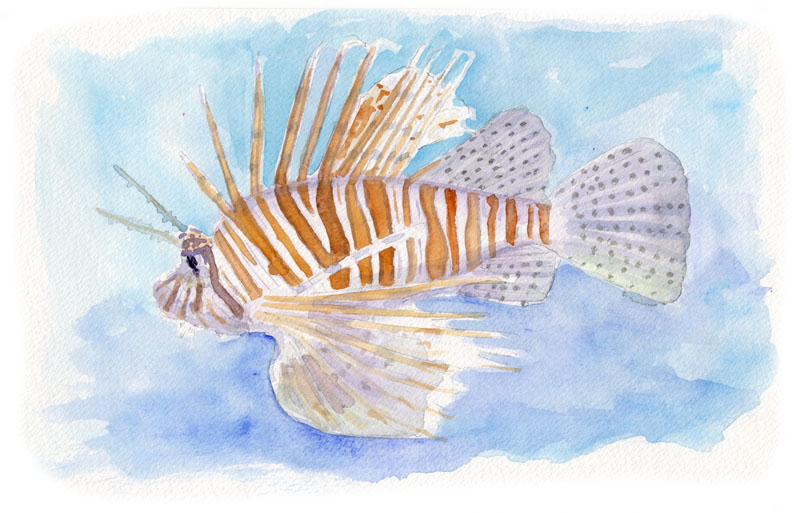Indo-Pacific Lionfish

March/April 2012 ISSN-1059-6518 Volume 25 Number 2
The INVASIVE Indo-Pacific Lionfish
By Frank Hubbell, DO
Illustration by T.B.R. Walsh
While recently in the Caribbean, we became acutely aware of a major problem for the spectacular underwater world of the Caribbean Sea – the invasive Lionfish.
The problem is that Lionfish do not belong in the Atlantic Ocean or the Caribbean Sea. They are an Indo-Pacific predatory fish, and that is exactly where they belong – in the Indian and Pacific Oceans.
In the 1990’s, they were unintentionally introduced into the Atlantic, probably in the bilge water of ships returning to the Atlantic side of the world from the Indo-Pacific side. Today they have spread, as an invasive species, along the East Coast of the USA. In addition, they can be found in the Mesoamerican Barrier Reef System and the wider Caribbean Sea.
A highly invasive species, they do not have any natural predators in these waters. In fact, in these marine environs, their only predator is we humans.
LIONFISH
Pterois volitans and Pterois miles are the two species, out of nine, of Lionfish that have invaded the Atlantic Ocean and Caribbean Sea. They have multiple spines in their fins containing toxic barbs.
The toxin in these barbs is a complex protein mixture of neuromuscular toxins and a neurotransmitter, acetylcholine. It is the acetylcholine that causes the untoward effects on the heart.
Hazard to Humans
Because they are not an aggressive fish, they will not attack you. However, they still present a hazard to humans who handle a caught fish or step on a fish and are impaled by the toxic spines in the fins.
Injuries are not uncommon in the Indo-Pacific Oceans, with about 30,000 – 40,000 injuries beings reported annually. But, the envenomation is rarely lethal.
